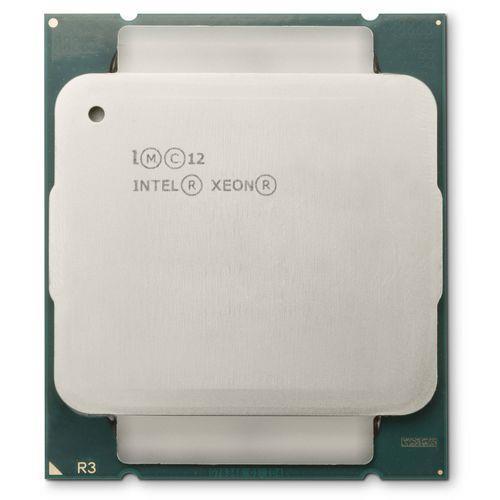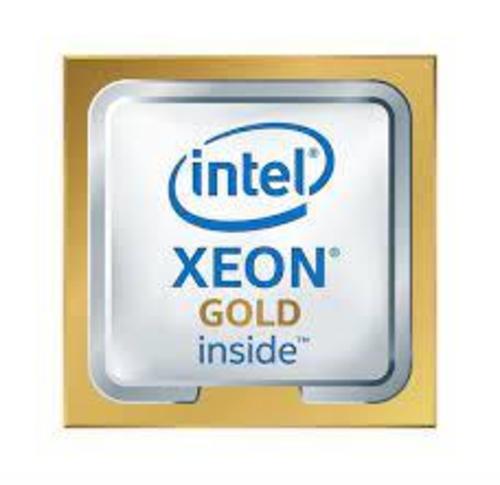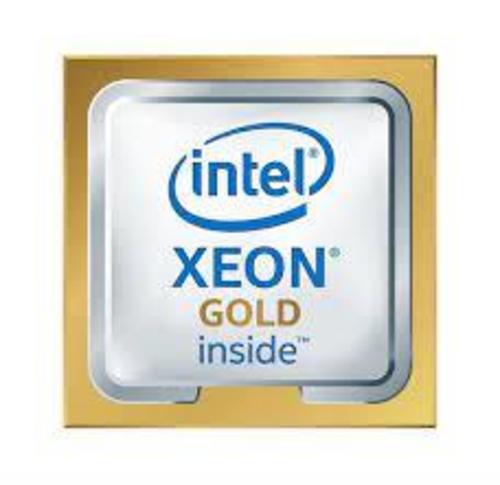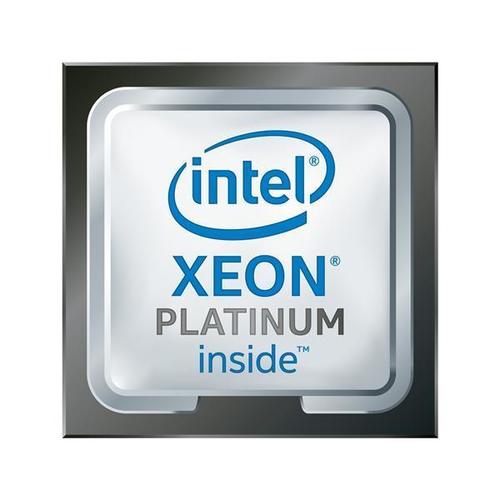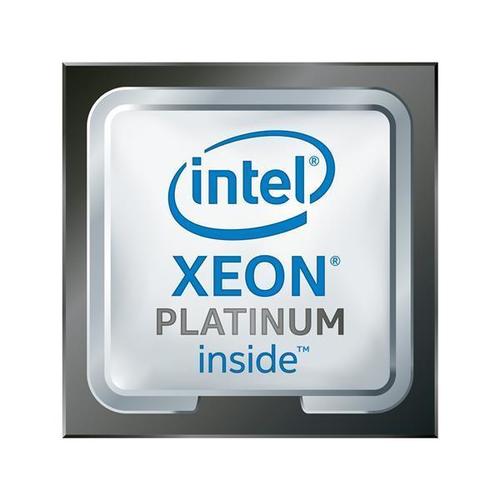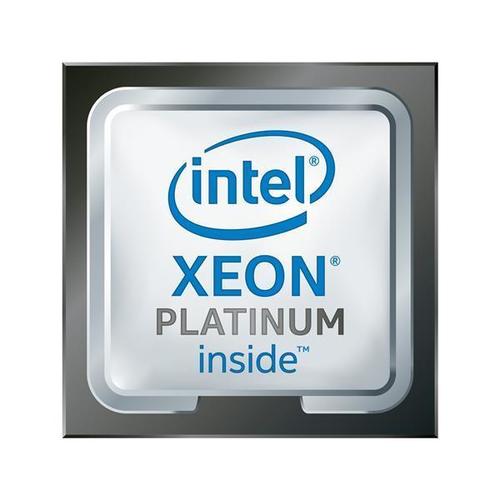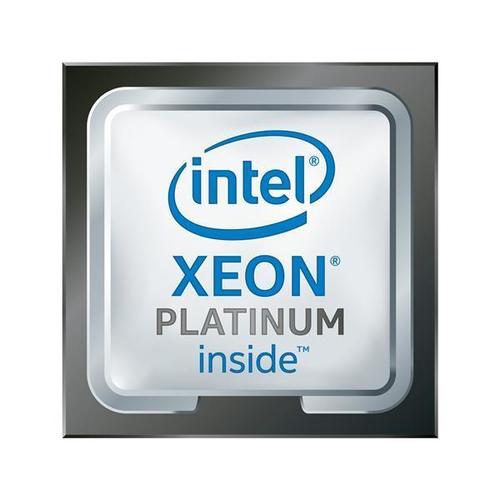Lenovo 4XG7A14268 Lenovo Intel Xeon Gold 5217 processor 3 GHz 11 MB L3
Second-generation Xeon Scalable processors are limited to the amount of memory they can address, as follows:- Processors with an L suffix (eg 8260L): Up to 4.5 TB per processor- Processors with an M suffix (eg 8260M): Up to 2 TB per processor- All other processors: Up to 1 TB per processorThe calculation of the total memory per processor includes both the system memory DIMMs and the Persistent Memory DCPMMs installed in the server.For example:- A configuration using 12x 64GB DIMMs per processor is a total of 768 GB, which means that neither an M nor an L processor is required- A configuration using 12x 128GB DIMMs per processor is a total of 1.5 TB, which means that an M processor is required- A configuration using 6x 32GB DIMMs + 6x 256GB DCPMMs is a total of 1.69 TB which means an M processor is required (an L processor may also be used)- A configuration using 6x 128GB DIMMs + 6x 512GB DCPMMs is a total of 3.75 TB which means an L processor is requiredThe following table lists the features of the supported second-generation Intel Xeon processors.
Lenovo 4XG7A14267 Lenovo Intel Xeon Gold 5215 processor 2.5 GHz 13.75 MB L3
Second-generation Xeon Scalable processors are limited to the amount of memory they can address, as follows:- Processors with an L suffix (eg 8260L): Up to 4.5 TB per processor- Processors with an M suffix (eg 8260M): Up to 2 TB per processor- All other processors: Up to 1 TB per processorThe calculation of the total memory per processor includes both the system memory DIMMs and the Persistent Memory DCPMMs installed in the server.For example:- A configuration using 12x 64GB DIMMs per processor is a total of 768 GB, which means that neither an M nor an L processor is required- A configuration using 12x 128GB DIMMs per processor is a total of 1.5 TB, which means that an M processor is required- A configuration using 6x 32GB DIMMs + 6x 256GB DCPMMs is a total of 1.69 TB which means an M processor is required (an L processor may also be used)- A configuration using 6x 128GB DIMMs + 6x 512GB DCPMMs is a total of 3.75 TB which means an L processor is requiredThe following table lists the features of the supported second-generation Intel Xeon processors.
Lenovo 4XG7A14266 Lenovo Intel Xeon Gold 5218 processor 2.3 GHz 22 MB L3
Second-generation Xeon Scalable processors are limited to the amount of memory they can address, as follows:- Processors with an L suffix (eg 8260L): Up to 4.5 TB per processor- Processors with an M suffix (eg 8260M): Up to 2 TB per processor- All other processors: Up to 1 TB per processorThe calculation of the total memory per processor includes both the system memory DIMMs and the Persistent Memory DCPMMs installed in the server.For example:- A configuration using 12x 64GB DIMMs per processor is a total of 768 GB, which means that neither an M nor an L processor is required- A configuration using 12x 128GB DIMMs per processor is a total of 1.5 TB, which means that an M processor is required- A configuration using 6x 32GB DIMMs + 6x 256GB DCPMMs is a total of 1.69 TB which means an M processor is required (an L processor may also be used)- A configuration using 6x 128GB DIMMs + 6x 512GB DCPMMs is a total of 3.75 TB which means an L processor is requiredThe following table lists the features of the supported second-generation Intel Xeon processors.
Lenovo 4XG7A14265 Lenovo Intel Xeon Gold 5220 processor 2.2 GHz 25 MB L3
Second-generation Xeon Scalable processors are limited to the amount of memory they can address, as follows:- Processors with an L suffix (eg 8260L): Up to 4.5 TB per processor- Processors with an M suffix (eg 8260M): Up to 2 TB per processor- All other processors: Up to 1 TB per processorThe calculation of the total memory per processor includes both the system memory DIMMs and the Persistent Memory DCPMMs installed in the server.For example:- A configuration using 12x 64GB DIMMs per processor is a total of 768 GB, which means that neither an M nor an L processor is required- A configuration using 12x 128GB DIMMs per processor is a total of 1.5 TB, which means that an M processor is required- A configuration using 6x 32GB DIMMs + 6x 256GB DCPMMs is a total of 1.69 TB which means an M processor is required (an L processor may also be used)- A configuration using 6x 128GB DIMMs + 6x 512GB DCPMMs is a total of 3.75 TB which means an L processor is requiredThe following table lists the features of the supported second-generation Intel Xeon processors.
Lenovo 4XG7A14253 Lenovo Intel Xeon Platinum 8280 processor 2.7 GHz 39 MB L3
Second-generation Xeon Scalable processors are limited to the amount of memory they can address, as follows:- Processors with an L suffix (eg 8260L): Up to 4.5 TB per processor- Processors with an M suffix (eg 8260M): Up to 2 TB per processor- All other processors: Up to 1 TB per processorThe calculation of the total memory per processor includes both the system memory DIMMs and the Persistent Memory DCPMMs installed in the server.For example:- A configuration using 12x 64GB DIMMs per processor is a total of 768 GB, which means that neither an M nor an L processor is required- A configuration using 12x 128GB DIMMs per processor is a total of 1.5 TB, which means that an M processor is required- A configuration using 6x 32GB DIMMs + 6x 256GB DCPMMs is a total of 1.69 TB which means an M processor is required (an L processor may also be used)- A configuration using 6x 128GB DIMMs + 6x 512GB DCPMMs is a total of 3.75 TB which means an L processor is requiredThe following table lists the features of the supported second-generation Intel Xeon processors.
Lenovo 4XG7A14256 Lenovo Intel Xeon Platinum 8268 processor 2.9 GHz 36 MB L3
Second-generation Xeon Scalable processors are limited to the amount of memory they can address, as follows:- Processors with an L suffix (eg 8260L): Up to 4.5 TB per processor- Processors with an M suffix (eg 8260M): Up to 2 TB per processor- All other processors: Up to 1 TB per processorThe calculation of the total memory per processor includes both the system memory DIMMs and the Persistent Memory DCPMMs installed in the server.For example:- A configuration using 12x 64GB DIMMs per processor is a total of 768 GB, which means that neither an M nor an L processor is required- A configuration using 12x 128GB DIMMs per processor is a total of 1.5 TB, which means that an M processor is required- A configuration using 6x 32GB DIMMs + 6x 256GB DCPMMs is a total of 1.69 TB which means an M processor is required (an L processor may also be used)- A configuration using 6x 128GB DIMMs + 6x 512GB DCPMMs is a total of 3.75 TB which means an L processor is requiredThe following table lists the features of the supported second-generation Intel Xeon processors.
Lenovo 4XG7A14255 Lenovo Intel Xeon Platinum 8270 processor 2.7 GHz 36 MB L3
Second-generation Xeon Scalable processors are limited to the amount of memory they can address, as follows:- Processors with an L suffix (eg 8260L): Up to 4.5 TB per processor- Processors with an M suffix (eg 8260M): Up to 2 TB per processor- All other processors: Up to 1 TB per processorThe calculation of the total memory per processor includes both the system memory DIMMs and the Persistent Memory DCPMMs installed in the server.For example:- A configuration using 12x 64GB DIMMs per processor is a total of 768 GB, which means that neither an M nor an L processor is required- A configuration using 12x 128GB DIMMs per processor is a total of 1.5 TB, which means that an M processor is required- A configuration using 6x 32GB DIMMs + 6x 256GB DCPMMs is a total of 1.69 TB which means an M processor is required (an L processor may also be used)- A configuration using 6x 128GB DIMMs + 6x 512GB DCPMMs is a total of 3.75 TB which means an L processor is requiredThe following table lists the features of the supported second-generation Intel Xeon processors.
Lenovo 4XG7A14254 Lenovo Intel Xeon Platinum 8276 processor 2.2 GHz 39 MB L3
Second-generation Xeon Scalable processors are limited to the amount of memory they can address, as follows:- Processors with an L suffix (eg 8260L): Up to 4.5 TB per processor- Processors with an M suffix (eg 8260M): Up to 2 TB per processor- All other processors: Up to 1 TB per processorThe calculation of the total memory per processor includes both the system memory DIMMs and the Persistent Memory DCPMMs installed in the server.For example:- A configuration using 12x 64GB DIMMs per processor is a total of 768 GB, which means that neither an M nor an L processor is required- A configuration using 12x 128GB DIMMs per processor is a total of 1.5 TB, which means that an M processor is required- A configuration using 6x 32GB DIMMs + 6x 256GB DCPMMs is a total of 1.69 TB which means an M processor is required (an L processor may also be used)- A configuration using 6x 128GB DIMMs + 6x 512GB DCPMMs is a total of 3.75 TB which means an L processor is requiredThe following table lists the features of the supported second-generation Intel Xeon processors.
Lenovo 4XG7A14257 Lenovo Intel Xeon Platinum 8260 processor 2.4 GHz 36 MB L3
Second-generation Xeon Scalable processors are limited to the amount of memory they can address, as follows:- Processors with an L suffix (eg 8260L): Up to 4.5 TB per processor- Processors with an M suffix (eg 8260M): Up to 2 TB per processor- All other processors: Up to 1 TB per processorThe calculation of the total memory per processor includes both the system memory DIMMs and the Persistent Memory DCPMMs installed in the server.For example:- A configuration using 12x 64GB DIMMs per processor is a total of 768 GB, which means that neither an M nor an L processor is required- A configuration using 12x 128GB DIMMs per processor is a total of 1.5 TB, which means that an M processor is required- A configuration using 6x 32GB DIMMs + 6x 256GB DCPMMs is a total of 1.69 TB which means an M processor is required (an L processor may also be used)- A configuration using 6x 128GB DIMMs + 6x 512GB DCPMMs is a total of 3.75 TB which means an L processor is requiredThe following table lists the features of the supported second-generation Intel Xeon processors.
Lenovo 4ZC7A15113 Lenovo 4ZC7A15113 memory module 128 GB DDR4 2933 MHz ECC
ThinkSystem TruDDR4 Memory delivers trusted, tested, quality, performance, and reliability throughout the ThinkSystem portfolio. We use the highest quality industry-standard memory components sourced from Tier 1 DRAM suppliers. Only memory that meets these strict requirements are selected for TruDDR4 Memory. It is then compatibility tested and tuned on every ThinkSystem server to maximize reliability.In addition, TruDDR4 Memory DIMMs have a unique signature programmed into them so your system can verify that TruDDR4 Memory is installed in your system. Since the memory will be authenticated, memory stretch goals are enabled only when TruDDR4 Memory DIMMs are detected. Together with lower power consumption, these new DIMMs can provide the lowest TCO for data centers.3DS RDIMMsTo meet the ever increasing demand for higher density server memory modules, Lenovo offers 3DS (3 Dimensional Stacked) DDR4 RDIMMs which apply TSV (Through Silicon Via) technology from our partnership with a leading Tier 1 DRAM supplier. The new TSV 3DS stack technology enables higher density DRAM stack packages with higher operational frequency and reduced power consumption. The RDIMM configuration along with 3DS TSV DRAM packages exhibits performance benefits and lower power consumption over alternative high density solutions to ultimately provide the lowest TCO for data centers.
Get a Quote
Item(s) added to cart
Netgear GS105E-200NAS ProSafe Plus Switch, 5-Port Gigabit Ethernet - 5 Ports - 2 Layer Supported - Wall Mountable - Lifetime Limited Warranty-None Listed Compliance
MFR: Netgear, Inc
Qty: 1
Part #: GS105NA

